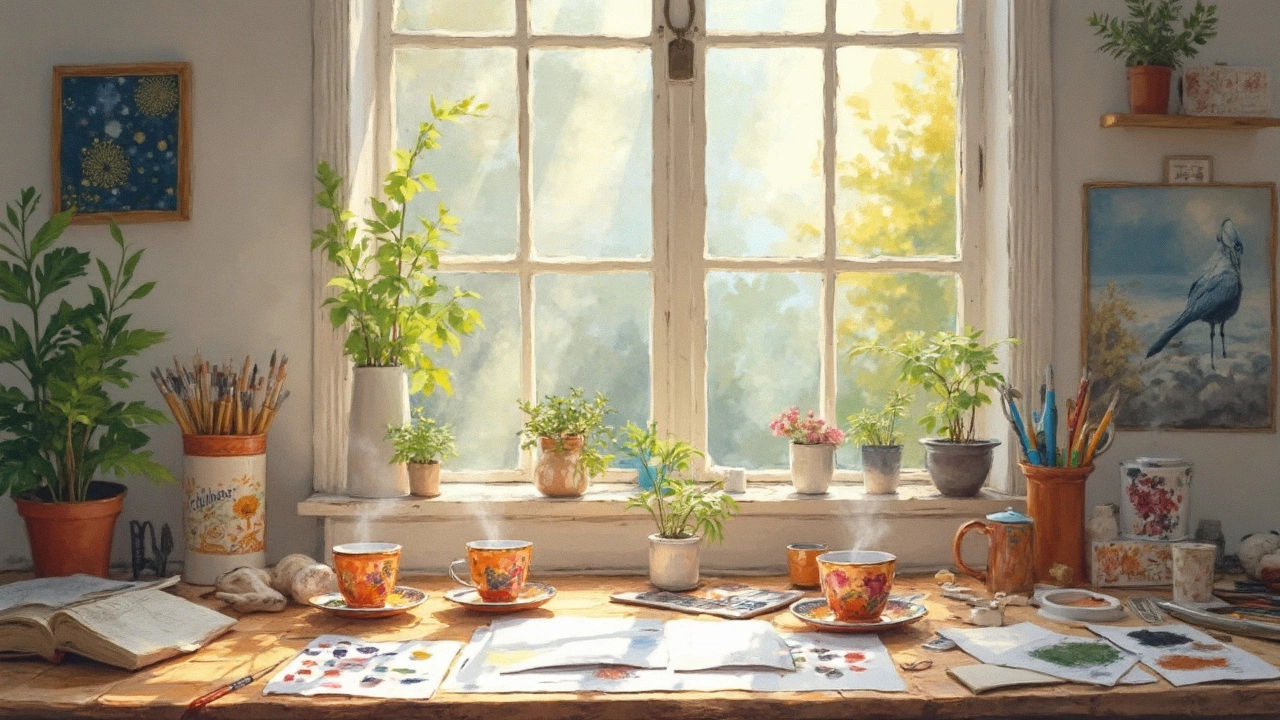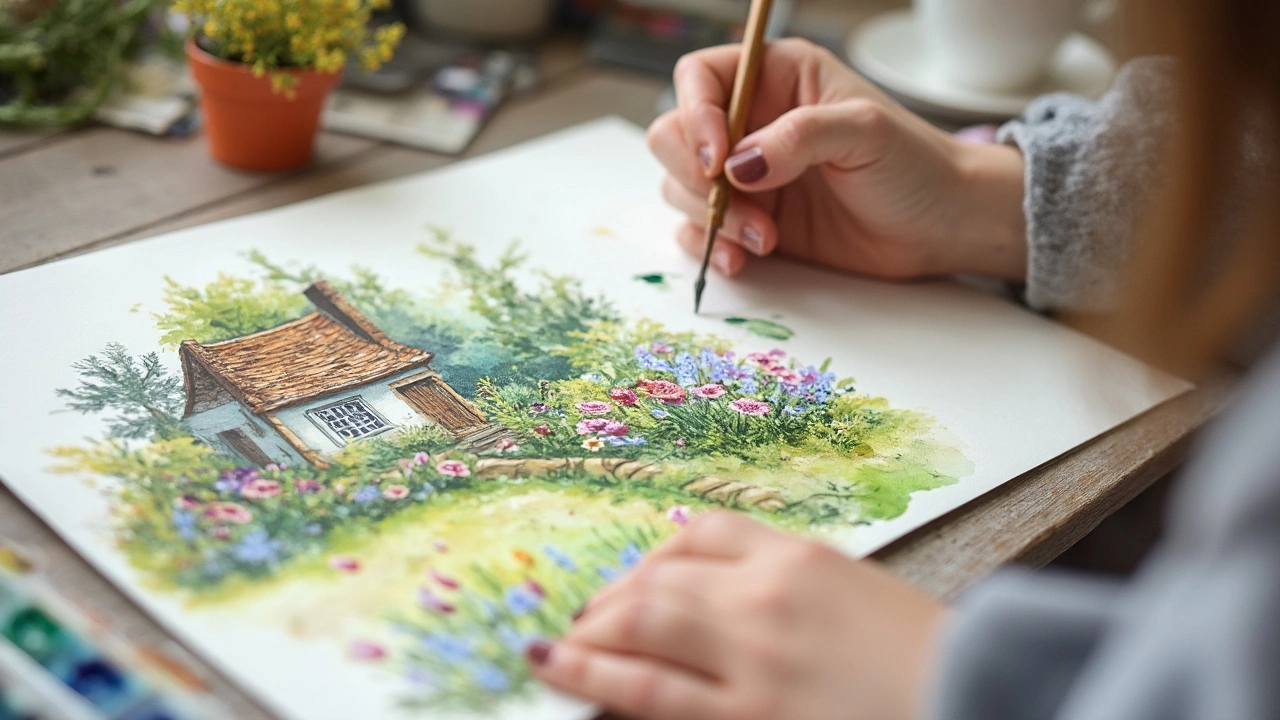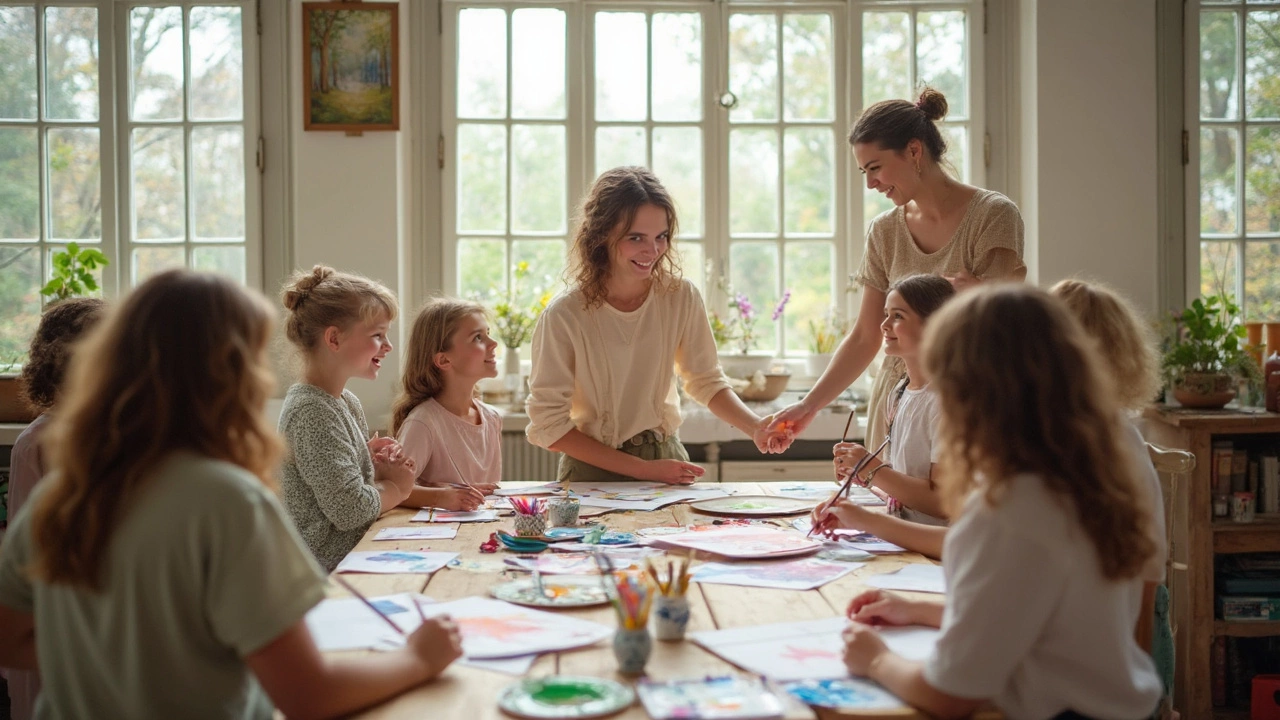Watercolor can seem so forgiving—just add water, right? But there’s a reason even experienced artists grumble about muddy colors, torn paper, and that moment you wish you could undo everything. Some mistakes keep popping up in every beginner’s journey, and honestly, most could be dodged with a heads-up.
Let’s talk about three of the most common blunders people trip over with watercolor. We’re talking about using the wrong amount of water, fiddling too much with your painting, and forgetting to let layers dry. Each one sneaks up on you and leaves you staring at a soggy mess or lifeless colors. I’ll break down what usually goes wrong, why it happens, and how to dodge the problem with simple swaps and small mindset shifts. Stick with me—your next painting might actually match the picture in your head.
- Using Too Much Water or Too Little
- Overworking the Paper
- Ignoring Drying Times
- Why Paper Quality Matters
- Trusting the Process: Letting Go of Perfection
Using Too Much Water or Too Little
Finding the right water balance is the first hurdle in watercolor painting. Pour on too much water and your colors run wild, bleeding unpredictably and soaking through your paper. Use too little, and the paint just drags—making streaks and blotches you can’t blend away. The best results? They land right in the middle: you want water guiding your paint, not flooding or strangling it.
Here’s the deal: water is what makes watercolor magic happen. The pigment floats and spreads, and you get those dreamy soft edges everyone loves. But here’s what really happens when you mess up:
- Too much water drowns your paper, dilutes your pigment, and can make paints pool into ugly blooms. Worse, it weakens cheap paper, sometimes leaving holes or wrinkles.
- Too little water leaves everything looking dry and scratchy, with colors that look harsh—nothing like those smooth gradients on pro paintings.
So how do you hit the sweet spot?
- For soft backgrounds, use a wet brush and wet paper—a method called "wet-on-wet." You’re looking for a glossy sheen, not puddles.
- For sharp details, a barely damp brush on dry paper (“wet-on-dry”) is your friend. If your brush drips, tap it on a towel before touching the page.
- Check your brush—if paint clings instead of gliding, you need more water. If it sinks straight through the paper (or takes forever to dry), use less.
Here’s a quick snapshot of water-to-paint effects:
| Water Amount | Paint Result | Common Mishap |
|---|---|---|
| Excessive | Pale, runny, uncontrolled spread | Backruns (blooms), wrinkled paper |
| Minimal | Dark, patchy, harsh lines | Scratchy texture, hard to blend |
| Balanced | Even color, easy blending | Smooth transitions, rich hues |
It takes time to get a feel for water, but just pausing to check if your brush is too loaded or too dry can save an entire piece. When in doubt, test on a scrap before hitting your real painting. If there’s one thing that unlocks vibrant watercolor work, it’s nailing this water-paint pairing.
Overworking the Paper
This one’s a trap for almost everyone. You think, “If I just tweak this bit or smooth out that edge one more time, it’ll be perfect.” Next thing you know, the paper’s pilling—those annoying little fuzz balls appear—or it starts to tear. Watercolor paper only handles so much scrubbing and rewetting before it gives up.
The science is simple: The paper’s surface gets weaker each time it’s soaked or wiped. Regular copy paper is a disaster for this, but even thick watercolor paper has its limits. You’ll see the damage quickest when you use a stiff brush or sponge, or if you keep layering washes while they’re still wet.
- If you see areas getting rough, that’s a red flag. Stop right away and let things dry before messing with it again.
- Use a soft, round brush rather than a hard or bristly one if you want to touch up a spot. It’s gentler on the fibers.
- Work in short bursts. Sometimes it’s better to leave a mistake and fix it later when the paper is bone dry.
If you’re aiming for a smooth look but end up with blotches from overworking, remember: less is more in watercolor. Professional artists talk about “knowing when to walk away,” since that’s often what keeps the paint fresh and lively. Plus, some happy accidents can look more natural than hours of fussing for perfection.

Ignoring Drying Times
This is one of those mistakes that’ll trip you up all the time. You finish laying down that first juicy wash and you’re eager to keep going, but jumping in too soon is the fastest way to end up with streaks, blooms, or colors that merge where you didn’t want them to. Watercolor isn’t like acrylic or oil. It won’t politely stay put if you start brushing over a wet spot. Colors can bleed, mix, or even lift completely off the page.
It actually takes less time to let things dry than to fix a muddy disaster. Most brands of watercolor paper need between 5 to 20 minutes for a layer to fully dry (sometimes more with a heavy wash or humid room). Cheap paper? Could be slower, and it’s easier to tear if you get impatient. Here’s a quick look at typical drying times under normal room conditions (about 21°C, 50% humidity):
| Type of Wash | Average Drying Time |
|---|---|
| Light wash | 5-10 minutes |
| Medium wash | 10-15 minutes |
| Heavy wash | 15-25 minutes |
If you try to paint right on top of an area that’s still damp, your brush will lift or disturb what’s underneath. This is called back-running or cauliflowering. Sometimes you want these effects, but usually it’s just not the vibe. If you crave crisp, clean lines or want to layer transparent colors for that classic watercolor look, patience really pays off.
So, what’s the best workaround for impatience? Use these tricks:
- Work in sections so one area can dry while you paint another.
- Keep a hairdryer handy—use low heat and keep it moving so you don’t buckle your paper.
- If your paper’s buckling, tape it down around the edges before starting. This helps it dry flat.
Plenty of professionals do something else while their painting dries. They check their reference photo, wash their brushes, or even just scroll their phones. Waiting doesn’t make you less of an artist—it makes your final work look way more polished. Break the habit of rushing, and your results will instantly improve.
Why Paper Quality Matters
Here’s something nobody mentions in those cheap watercolor starter sets: your paper is just as important as your paint and brushes. If you’re using typing paper or basic sketch pads, expect trouble. The right paper keeps colors bright, lets water move smoothly, and can handle a little mistake without shredding.
Good watercolor paper usually comes in three main types—hot press (smooth), cold press (slightly textured), and rough (very textured). Most beginners start with cold press because it’s got just enough texture to grab the paint, but it’s not too wild. The big deal is the weight: skip anything less than 140 lb/300 gsm. Lighter paper buckles, warps, and pills when it gets wet, making it almost impossible to rescue your painting if you make a mistake.
Let’s get specific. High-quality watercolor paper is made from 100% cotton. Cotton fibers absorb water evenly, keep colors vibrant, and let you blend without making a mess. Cheaper cellulose papers just can’t compete—they’ll turn your washes blotchy and eat up your patience.
Here’s a quick comparison of common watercolor paper types:
| Type | Material | Weight | What Happens? |
|---|---|---|---|
| Printer Paper | Wood Pulp | Up to 90 gsm | Curls, pills, colors fade |
| Student Watercolor | Wood Pulp Mix | 90–200 gsm | Some buckling, uneven colors |
| Artist Watercolor | 100% Cotton | 300 gsm+ | Stays flat, colors stay bright |
Buying proper watercolor paper does cost more, but you’ll waste fewer paintings and paint less. Try buying a small pack of 100% cotton paper and compare your results—it’s wild how much easier blending and layering feels.
- If your paper curls or gets see-through, upgrade the weight.
- If the paint doesn’t move like you want it to, try a different surface texture.
- Always check the label for “acid-free”—that keeps your work from yellowing over time.
Here’s the big tip: treat your paper like an investment in every painting you make. Nobody’s making stunning art on copy paper, no matter what you see on Instagram. Stick to legit watercolor paper for real progress in your watercolor skills.

Trusting the Process: Letting Go of Perfection
This is where a lot of people freeze up. You probably start a watercolor painting with a nice idea in your head, but when it doesn’t turn out “perfect,” frustration creeps in. The thing is, watercolor just isn’t about total control. The paint likes to move, the water spreads, colors blend in goofy ways, and happy accidents are pretty much part of the deal.
The real magic happens when you stop fighting those little surprises and actually let them work for you. Most watercolor pros agree that the best results come from letting go a bit. So instead of chasing a flawless look, focus on what watercolor does best—translucent layers, basic unpredictability, and bright, lively colors.
- If your color spreads outside your initial pencil line, don’t panic. That’s normal, and sometimes it even looks better in the end.
- Watermark blooms (those squiggly edges from too much water) can give a soft effect that brings life to skies or backgrounds. Some artists even paint background washes just for this reason.
- Trying to correct every tiny spot makes things worse—overworked paper and dull spots, guaranteed.
Think about this: a survey by Watercolor Society of America in 2023 found that watercolor artists who embraced accidents in their process rated higher satisfaction and personal growth than those who focused on precision alone.
| Approach | Percent reporting satisfaction |
|---|---|
| Embracing unpredictability | 78% |
| Perfection-focused | 42% |
So here’s the deal—give yourself some slack. Let your first washes look loose. Leave the brush marks in. The more you paint, the more you’ll see those quirks are actually what give your work life and style. Watercolor is supposed to look a little wild, and that’s its charm.

